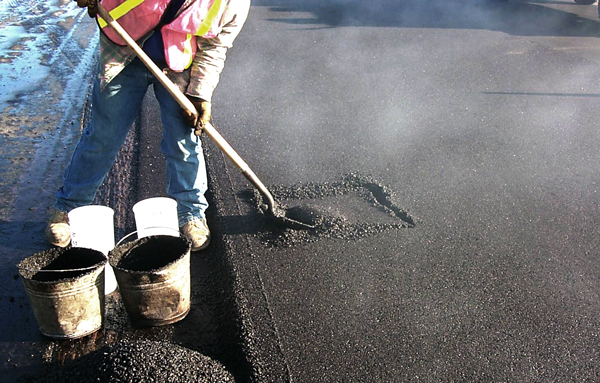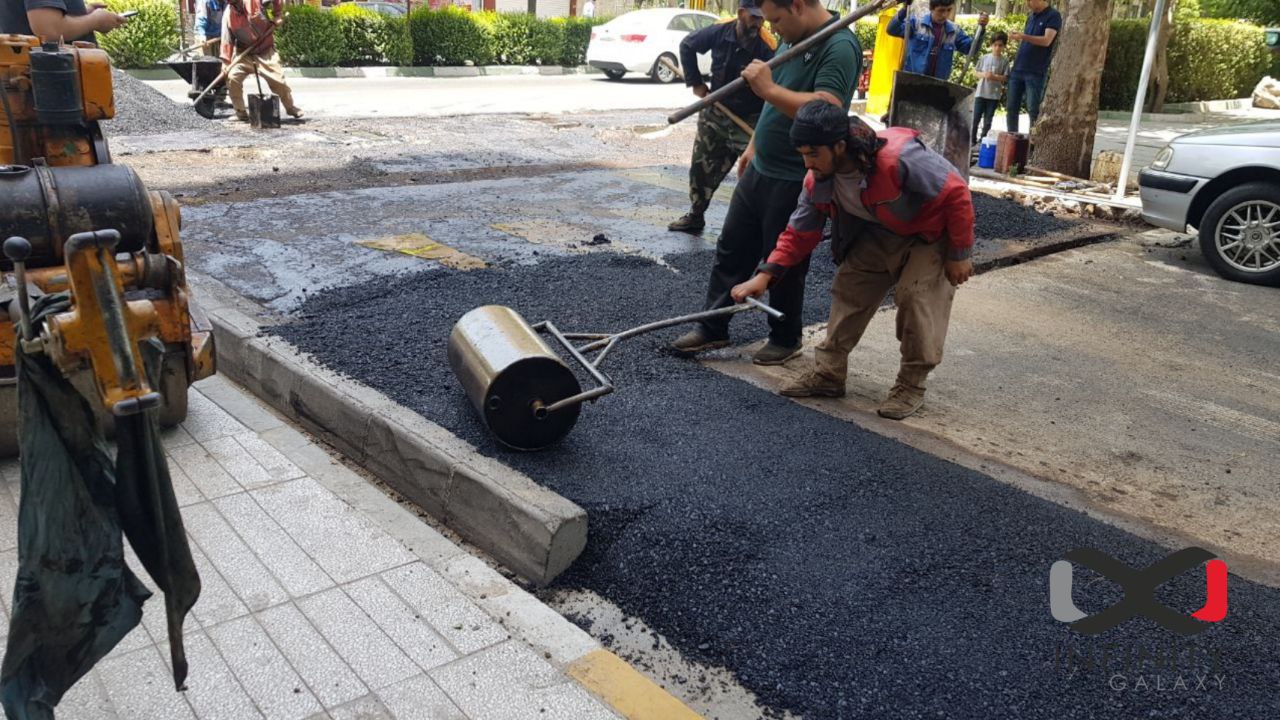Boost the Feel And Look of Your Home with Expert Commercial Parking Great Deal Paving
Boost the Feel And Look of Your Home with Expert Commercial Parking Great Deal Paving
Blog Article
Opening the Tricks of Warm Mix Asphalt Innovation
Checking out the depths of warm mix asphalt modern technology discovers a world where specific formulations and precise procedures merge to form our roadways and framework. The combination of accumulations, binders, and fillers isn't just a building and construction job but a strategic orchestration of resilience and performance. As we peer into the intricate dancing of elements, a tapestry of durability and sustainability unfolds. However what exists under this surface area of asphaltic proficiency, and what secrets wait to be introduced in the realm of leading developments?
Relevance of Warm Mix Asphalt
Warm Mix Asphalt plays an essential duty in modern-day infrastructure growth as a result of its resilience and cost-effectiveness. As one of the most typically utilized paving material for roadways, highways, and car park, Warm Mix Asphalt offers a variety of benefits that add to its relevance in building jobs. One vital benefit is its ability to stand up to rush hour tons and severe climate condition, providing a reliable and resilient surface area for transport networks. Furthermore, Warm Mix Asphalt is economical in both initial building and long-term upkeep, making it a preferred choice for several infrastructure tasks.
The resilience of Hot Mix Asphalt stems from its structure, which includes accumulations, binder, and filler products that are thoroughly selected and mixed to satisfy details performance needs. On the whole, the significance of Hot Mix Asphalt in framework advancement can not be underrated, as it proceeds to be a foundation of contemporary building and construction methods.
Components of Asphalt Mixes
The composition of asphalt blends includes carefully picked aggregates, binder, and filler products that are important for achieving certain performance requirements. Accumulations are the key element of asphalt blends, providing stamina and stability. These aggregates can be natural, such as crushed rock or smashed stone, or artificial, like recycled materials from old pavements. The binder, generally bitumen or asphalt cement, holds the aggregates together and offers versatility and longevity to the mix. The choice of the binder is important as it straight affects the mix's efficiency in different weather. Fillers, such as hydrated lime or Portland cement, are used to improve the mix's workability and aging resistance. Angled Parking.
The combination and proportion of these parts play a substantial role in identifying the high quality and efficiency of the asphalt mix. Designers very carefully design the mix to meet specific requirements, taking into consideration aspects like web traffic quantity, environment conditions, and pavement life expectancy. Appropriate choice and balancing of aggregates, binder, and fillers are essential for developing long lasting, durable asphalt pavements.
Mixing and Production Techniques

When the aggregates are picked, the binder, often asphalt cement, is added to bind the materials together. The binder's quality and quantity dramatically impact the mix's resistance, strength, and versatility to environmental variables. Furthermore, fillers like hydrated lime or Portland concrete may be included to enhance certain characteristics of the asphalt mix, such as its workability or dampness resistance.
Throughout manufacturing, the aggregates and binder are heated up, normally between 250-325 ° F(121-163 ° C ), to assist in blending and make sure proper coating of the accumulations. The mixing procedure must be extensive to achieve a homogeneous mix that promotes the desired efficiency attributes of the asphalt. Various techniques, such as set mixing or drum blending, are utilized to attain regular and top quality asphalt blends for building tasks.
Aspects Impacting Asphalt Efficiency
Factors influencing asphalt performance encompass a variety of variables that impact the resilience, longevity, and general top quality of asphalt pavements. One crucial aspect is the high quality Resources of products made use of in the asphalt mix.

Design factors to consider, such as pavement density and water drainage, are essential in making sure the lasting performance of the asphalt pavement. By carefully considering these variables, contractors and designers can enhance asphalt efficiency and boost the solution life of sidewalks.
Sustainable Practices in Asphalt Technology

Furthermore, the development of warm-mix asphalt (WMA) technologies has acquired grip over the last few years. WMA enables the production and placement of asphalt mixes at lower temperatures compared to typical hot-mix asphalt, resulting in reduced energy intake and greenhouse gas discharges. In addition, using permeable asphalt mixes can help mitigate stormwater drainage concerns by enabling water to infiltrate with the pavement and right into the ground, promoting natural water purification and charge processes. By carrying out these lasting techniques, the asphalt sector can add to constructing a more eco-friendly and durable infrastructure network.
Final Thought
To conclude, warm mix asphalt technology plays an important function in contemporary facilities advancement as a result of its resilience and cost-effectiveness. By important source carefully stabilizing elements, utilizing proper blending methods, and considering numerous variables, designers can develop top quality asphalt mixes that stand up to heavy website traffic loads and extreme climate problems. Accepting lasting methods, such as using warm-mix modern technologies and recycled materials, better improves the environmental friendliness of asphalt innovation.
Blending and manufacturing strategies in hot mix find out here asphalt modern technology include the precise mix and handling of aggregates, binder, and fillers to develop a high-performance and long lasting asphalt mix.Aspects influencing asphalt performance include an array of variables that influence the toughness, durability, and total top quality of asphalt sidewalks. Lasting practices in asphalt innovation encompass numerous initiatives aimed at reducing the environmental impact of asphalt manufacturing and paving processes. By integrating recovered asphalt pavement (RAP) and recycled asphalt tiles (RAS) into new asphalt blends, the market can significantly minimize the consumption of raw materials and power, while additionally reducing land fill waste.
WMA enables for the production and placement of asphalt blends at lower temperature levels contrasted to typical hot-mix asphalt, resulting in reduced power intake and greenhouse gas emissions.
Report this page